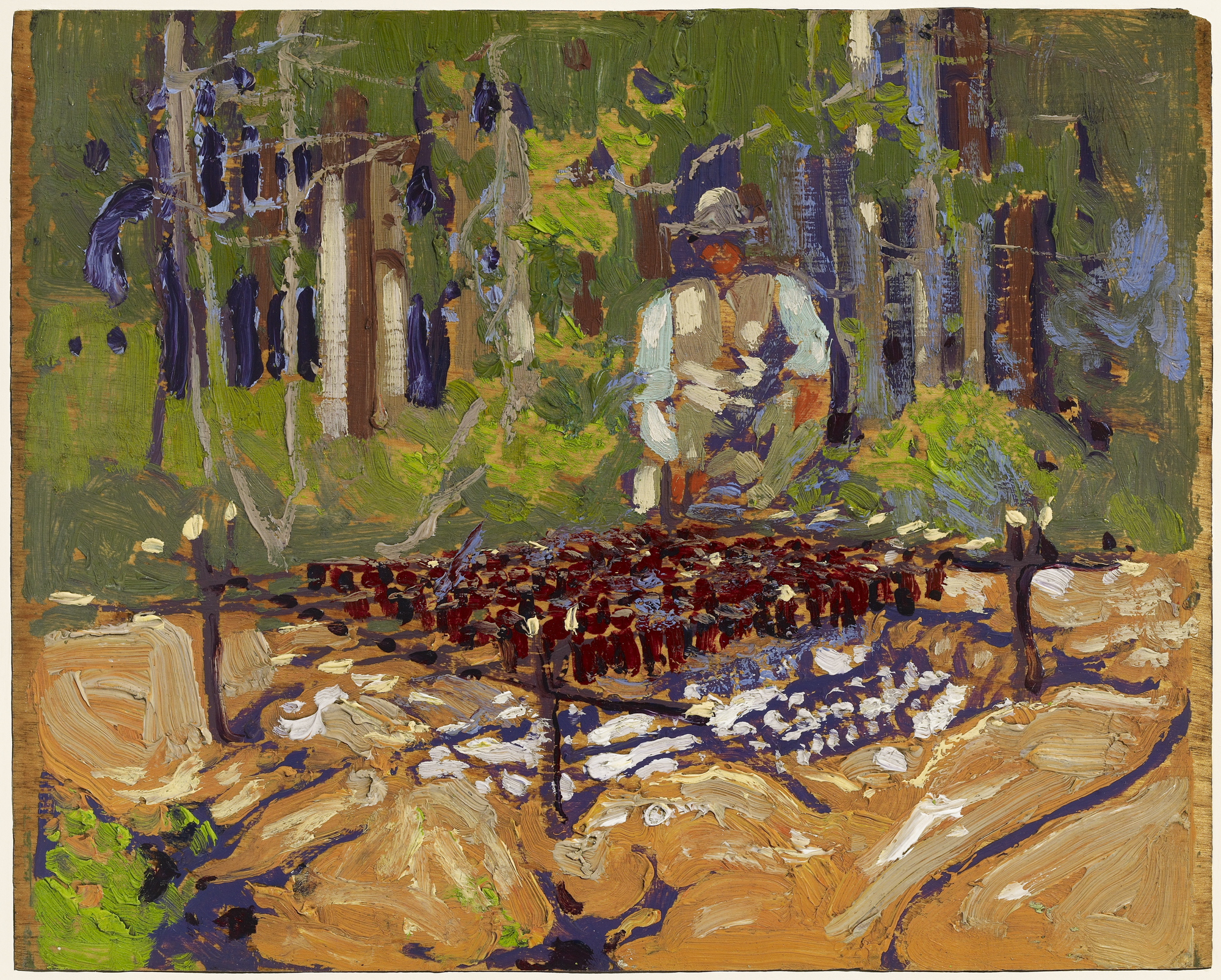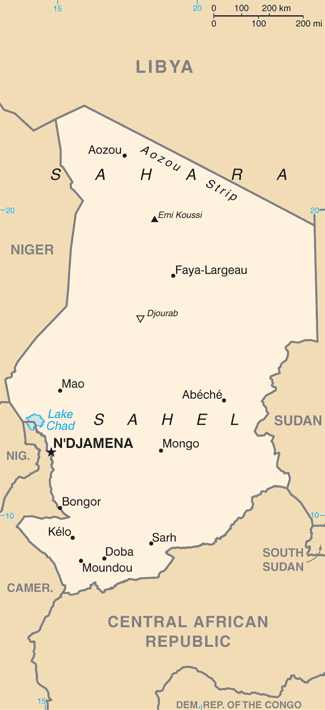|
2006 Zakouma Elephant Slaughter
The 2006 Zakouma elephant slaughter refers to a series of poaching massacres of African elephants in the vicinity of Zakouma National Park in southeastern Chad. These killings were documented in aerial surveys conducted from May through August 2006 and total at least 100 animals. This region has a four-decade long history of illegal killing of elephants. Chad's elephant population was reduced to around 20,000 in the mid-1980s and was roughly 3,000 as of 2010, according to Stephanie Vergniault, head of SOS Elephants in Chad. The elephant nominally has Chadian governmental protection, but the implementation practices of the government (backed with assistance from the European Union) was largely insufficient to stem the slaughter by poachers. The African bush elephant (''Loxodonta africana'') species occurs in several countries of Eastern and Central Africa. The most recent aerial surveys in Chad were conducted from August 3–11, 2006, overseen by J. Michael Fay, a Wildlife Conserva ... [...More Info...] [...Related Items...] OR: [Wikipedia] [Google] [Baidu] |
Poaching
Poaching is the illegal hunting or capturing of wild animals, usually associated with land use rights. Poaching was once performed by impoverished peasants for subsistence purposes and to supplement meager diets. It was set against the hunting privileges of nobility and territorial rulers. Since the 1980s, the term "poaching" has also been used to refer to the illegal harvesting of wild plants. In agricultural terms, the term 'poaching' is also applied to the loss of soils or grass by the damaging action of feet of livestock, which can affect availability of productive land, water pollution through increased runoff and welfare issues for cattle. Stealing livestock, as in cattle raiding, classifies as theft rather than poaching. The United Nations' Sustainable Development Goal 15 enshrines the sustainable use of all wildlife. It targets the taking of action on dealing with poaching and trafficking of protected species of flora and fauna to ensure their availability for present ... [...More Info...] [...Related Items...] OR: [Wikipedia] [Google] [Baidu] |
Bahr Salamat Faunal Reserve
Bahr Salamat Faunal Reserve (Réserve de faune du Bahr Salamat) is a conservation area in Chad. It is named after the Bahr Salamat River which flows through it. The reserve was designated on 1 January 1964 and is classed as IUCN category IV (Habitat/Species Management Area). It has an area of 20,600 square kilometres and includes parts of the prefectures of Salamat, Guéra and Moyen-Chari, and surrounds the Zakouma National Park. Approximately half of its area is Lac Iro Controlled Hunting Area. The area plays a very important role for the surrounding wildlife, providing refuge for several species of migratory birds, supporting cheetahs, hippos, elephants and several species of antelope. It prevents floods, regulates groundwater replenishment, sediment capture and chemical water regulation, and offers the hatching habitat for several fish species. See also *2006 Zakouma elephant slaughter The 2006 Zakouma elephant slaughter refers to a series of poaching massacres of Afri ... [...More Info...] [...Related Items...] OR: [Wikipedia] [Google] [Baidu] |
Ivory
Ivory is a hard, white material from the tusks (traditionally from elephants) and Tooth, teeth of animals, that consists mainly of dentine, one of the physical structures of teeth and tusks. The chemical structure of the teeth and tusks of mammals is the same, regardless of the species of origin, but ivory contains structures of mineralised collagen. The trade in certain teeth and tusks other than elephant is well established and widespread; therefore, "ivory" can correctly be used to describe any mammalian teeth or tusks of commercial interest which are large enough to be carved or scrimshawed. Besides natural ivory, ivory can also be produced synthetically, hence (unlike natural ivory) not requiring the retrieval of the material from animals. Tagua nuts can also be carved like ivory. The trade of finished goods of ivory products has its origins in the Indus Valley. Ivory is a main product that is seen in abundance and was used for trading in Harappan civilization. Finished iv ... [...More Info...] [...Related Items...] OR: [Wikipedia] [Google] [Baidu] |
Extinction
Extinction is the termination of an organism by the death of its Endling, last member. A taxon may become Functional extinction, functionally extinct before the death of its last member if it loses the capacity to Reproduction, reproduce and recover. As a species' potential Range (biology), range may be very large, determining this moment is difficult, and is usually done retrospectively. This difficulty leads to phenomena such as Lazarus taxon, Lazarus taxa, where a species presumed extinct abruptly "reappears" (typically in the Fossil, fossil record) after a period of apparent absence. Over five billion species are estimated to have died out. It is estimated that there are currently around 8.7 million species of eukaryotes globally, possibly many times more if microorganisms are included. Notable extinct animal species include Dinosaur, non-avian dinosaurs, Machairodontinae, saber-toothed cats, and mammoths. Through evolution, species arise through the process of specia ... [...More Info...] [...Related Items...] OR: [Wikipedia] [Google] [Baidu] |
Elephant Hunting In Chad
Elephant hunting or elephant poaching and exploitation of their tusks for the ivory trade are illegal in Chad and pose a major threat to elephant populations. The profitable ivory industry is also a threat to the lives of rangers, even in the national parks, such as Zakouma National Park, the worst-affected area in terms of elephant poaching in Chad. History Chad's elephant population was reduced to around 20,000 in the mid-1980s and was roughly 3,000 as of 2010, according to Stephanie Vergniault, head of SOS Elephants in Chad. The animals were subject to massacre by herds in and around the parks by organized poachers. The problem is worsened by the fact that the parks are understaffed and that a number of wardens have been murdered by poachers. Consequently, since the mid-1980s the elephant population has declined in the 20th century from 150,000 to a reported low of just 2,000 in the Chad-Cameroon region according to ''The Guardian''. and 500 in Chad alone in 2013 according to t ... [...More Info...] [...Related Items...] OR: [Wikipedia] [Google] [Baidu] |
The Wildlife Conservation Society
The Wildlife Conservation Society (WCS) is a global 501(c)(3) non-governmental organization, headquartered at the Bronx Zoo in New York City, with a mission to save "wildlife and wild places across the globe". Founded in 1895 as the New York Zoölogical Society (NYZS), the global conservation organization is, as of April 2, 2024, led by Interim President and CEO Robb Menzi. WCS manages four New York City wildlife parks in addition to the Bronx Zoo: the Central Park Zoo, New York Aquarium, Prospect Park Zoo, and Queens Zoo. Together, these parks receive 4 million visitors per year."About Us" ''WCS.org'', accessed 23 November 2020 All these facilities are accredited by the Association of Zoos and ...
[...More Info...] [...Related Items...] OR: [Wikipedia] [Google] [Baidu] |
WILD Foundation
The WILD Foundation is a 501(c)(3) organization that was founded in 1974 by two South Africans and based in Boulder, Colorado. History The WILD Foundation was founded in 1974 by South African game ranger Ian Player and his Zulu mentor Magqubu Ntombela. One of their most notable conservation efforts prior to forming the WILD Foundation was called "Operation Rhino", the apartheid government's attempt to save the white rhinoceros from extinction in the 1960s. Recent escalations in poaching in the 2010s have brought rhinoceros preservation back to the forefront of WILD's efforts. After leaving the government wildlife service, Player founded the Wilderness Leadership School, taking people on five-day hikes in the African wilderness. The school started during apartheid and was the first organization in Africa giving its participants a thorough wilderness experience regardless of race. In 1974, the ideas of conservation that inspired the Wilderness Leadership School expanded int ... [...More Info...] [...Related Items...] OR: [Wikipedia] [Google] [Baidu] |
Darfur
Darfur ( ; ) is a region of western Sudan. ''Dār'' is an Arabic word meaning "home f – the region was named Dardaju () while ruled by the Daju, who migrated from Meroë , and it was renamed Dartunjur () when the Tunjur ruled the area. Darfur was an independent sultanate for several hundred years until 1874, when it fell to the Sudanese warlord Rabih az-Zubayr. The region was later invaded and incorporated into Sudan by Anglo-Egyptian forces in 1916. Richard Cockett Sudan: Darfur and the failure of an African state. 2010. Hobbs the Printers Ltd., Totten, Hampshire. As an administrative region, Darfur is divided into five federal states: Central Darfur, East Darfur, North Darfur, South Darfur and West Darfur. Because of the War in Darfur between Sudanese government forces and the indigenous population, the region has been in a state of humanitarian emergency and genocide since 2003. The factors include religious and ethnic rivalry, and the rivalry between farm ... [...More Info...] [...Related Items...] OR: [Wikipedia] [Google] [Baidu] |
Chinese People
The Chinese people, or simply Chinese, are people or ethnic groups identified with Greater China, China, usually through ethnicity, nationality, citizenship, or other affiliation. Chinese people are known as Zhongguoren () or as Huaren () by speakers of standard Chinese, including those living in Greater China as well as overseas Chinese. Although both terms both refer to Chinese people, their usage depends on the person and context. The former term is commonly (but not exclusively) used to refer to the citizens of the People's Republic of China—especially mainland China. The term Huaren is used to refer to ethnic Chinese, and is more often used for those who reside overseas or are non-citizens of China. The Han Chinese are the largest ethnic group in China, comprising approximately 92% of its Mainland China, Mainland population. [...More Info...] [...Related Items...] OR: [Wikipedia] [Google] [Baidu] |
Thailand
Thailand, officially the Kingdom of Thailand and historically known as Siam (the official name until 1939), is a country in Southeast Asia on the Mainland Southeast Asia, Indochinese Peninsula. With a population of almost 66 million, it spans . Thailand Template:Borders of Thailand, is bordered to the northwest by Myanmar, to the northeast and east by Laos, to the southeast by Cambodia, to the south by the Gulf of Thailand and Malaysia, and to the southwest by the Andaman Sea; it also shares maritime borders with Vietnam to the southeast and Indonesia and India to the southwest. Bangkok is the state capital and List of municipalities in Thailand#Largest cities by urban population, largest city. Tai peoples, Thai peoples migrated from southwestern China to mainland Southeast Asia from the 6th to 11th centuries. Greater India, Indianised kingdoms such as the Mon kingdoms, Mon, Khmer Empire, and Monarchies of Malaysia, Malay states ruled the region, competing with Thai states s ... [...More Info...] [...Related Items...] OR: [Wikipedia] [Google] [Baidu] |




